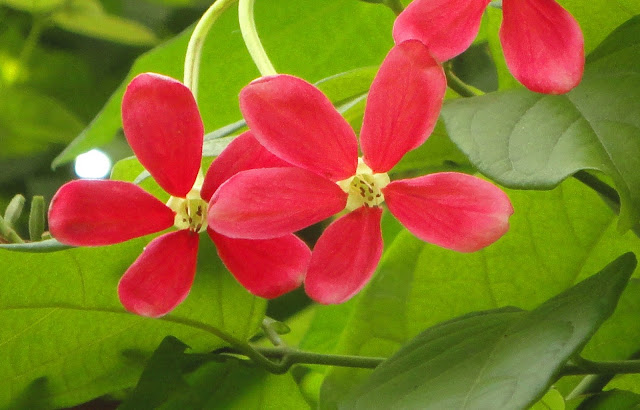Asam lota or Bitter vine, Mikania micrantha

Asam lota or Bitter vine ( Mikania micrantha , family: Asteraceae) is a perennial extensive climber. It can be easily found in fallow lands, crop fields and roadside areas in Bangladesh. It is an invasive species. Usually with the help of a tree it climbed up. In case of small tree it does serious damage. Other names: Bharoti-lota, Rabon lota, Tara-lota. Leaves are opposite, green, ovate to cordate, edge sometimes uneven, sometimes wavy, petiole long, sometimes dark green, sometimes pale. The size of the vine or its leaves differ on the basis of soil fertility. Branched inflorescence comes out from leaf axil. Flower is white or pale white. Each branch contains three to four white flowers. Numerous branches occurs together. Therefore, the flower cluster seems quite large. It spreads quickly in rainy season. So it causes serious damage to crops then. Especially it does a great damage to Sal f...













